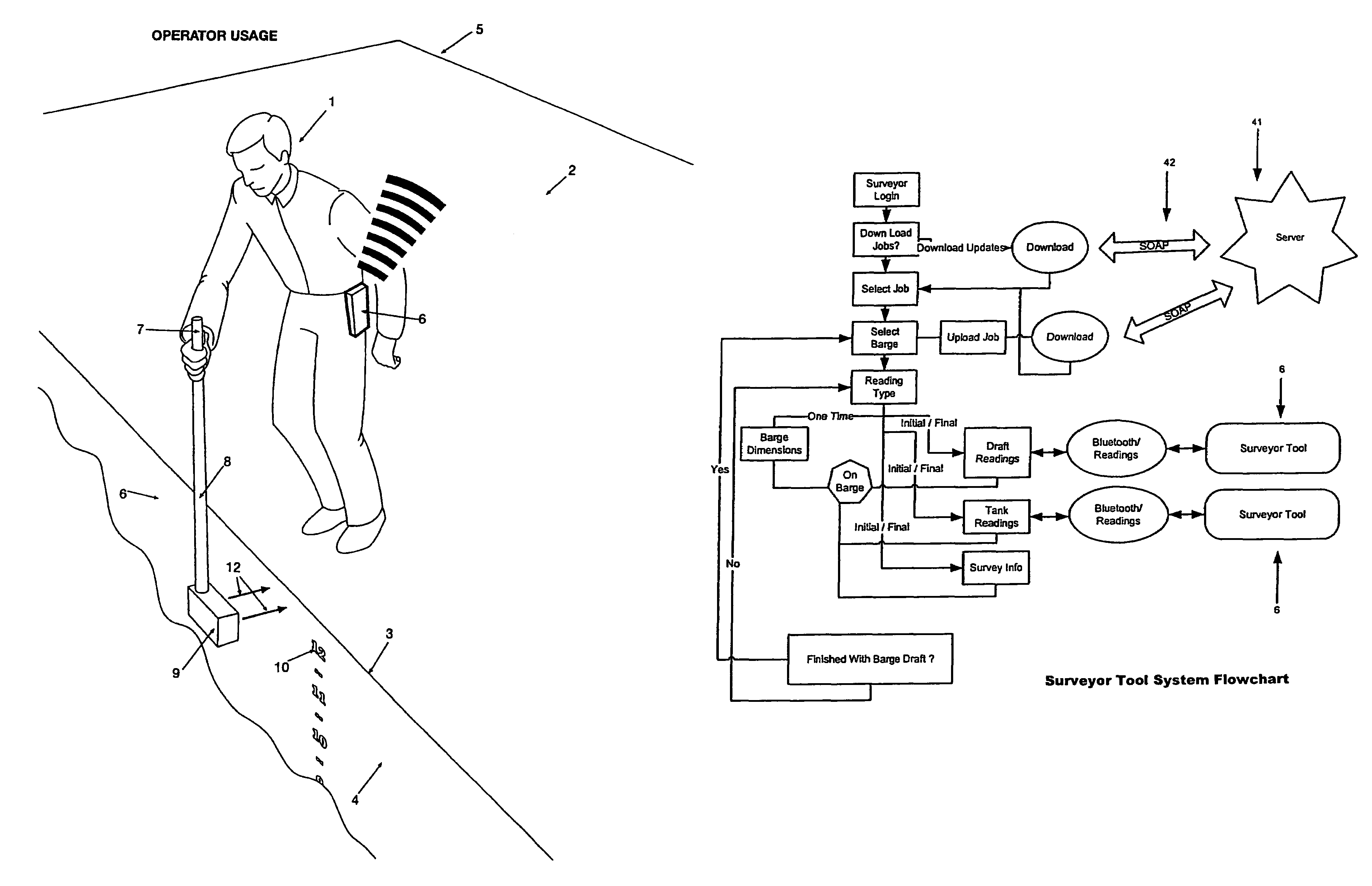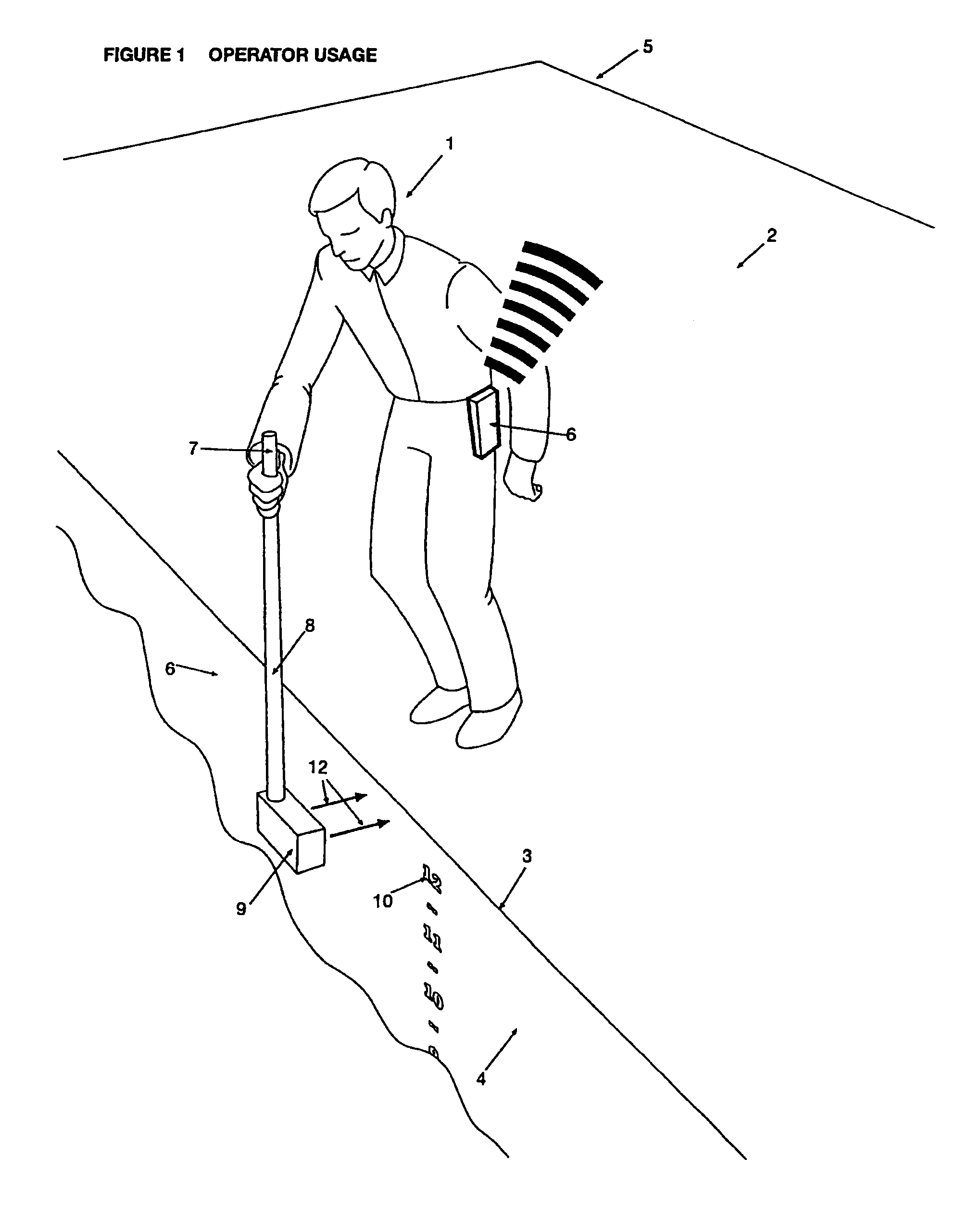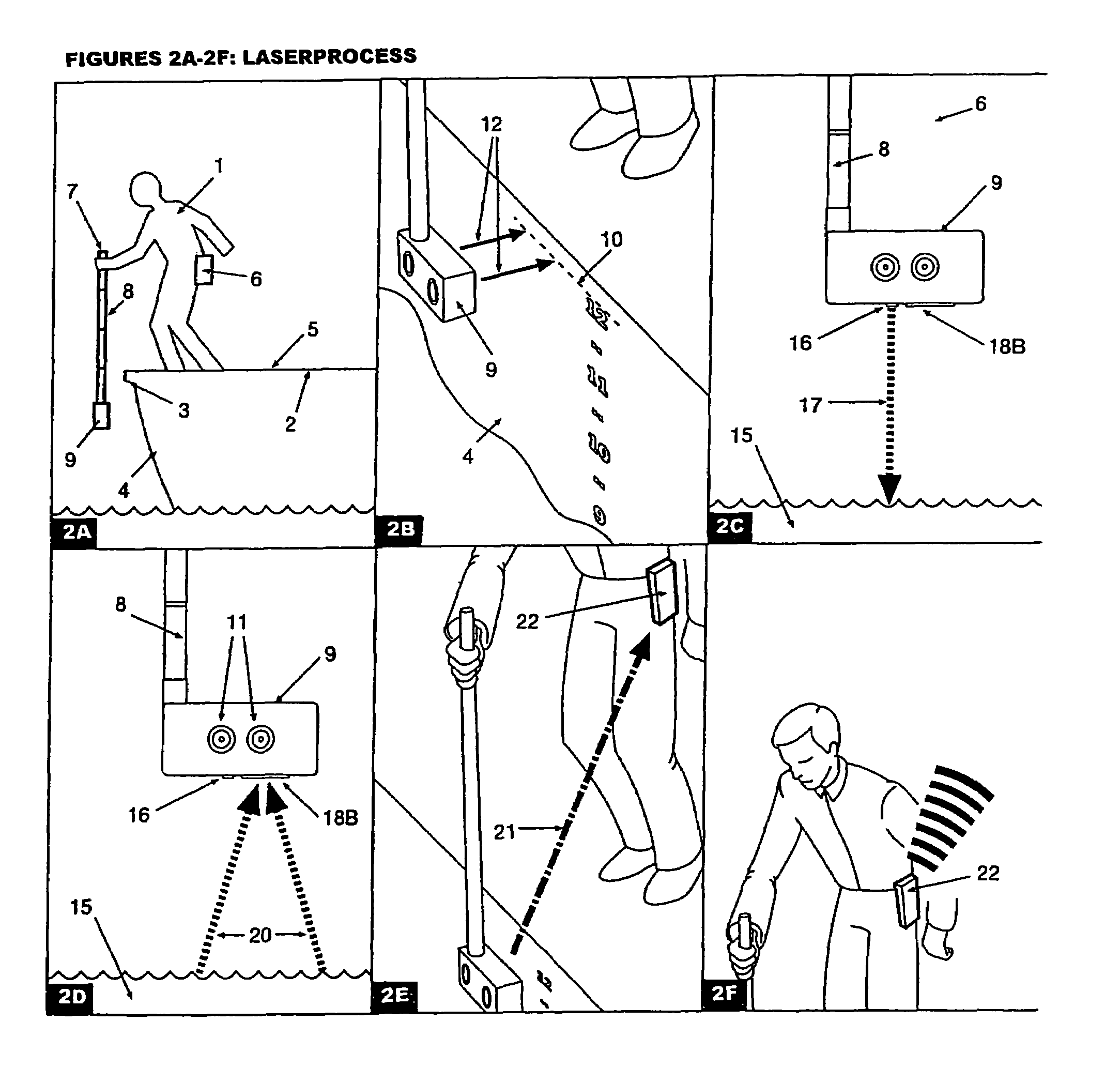Methods and apparatus to determine vessel draft and amount of cargo loaded in a vessel
a technology of vessel drafting and vessel load, which is applied in the direction of distance measurement, survey, borehole/well accessories, etc., can solve the problems of current barge drafting measurement, cost variation of over $10,000 per barge, and difficulty in finding the “true” plane of the barge deck, so as to achieve easy and accurate positioning
- Summary
- Abstract
- Description
- Claims
- Application Information
AI Technical Summary
Benefits of technology
Problems solved by technology
Method used
Image
Examples
Embodiment Construction
[0030]Our system includes an optical indication allowing for the alignment of the tool to the draft numbers. This allows for a more constant integration to the barge, regardless of the condition of the barge deck.
[0031]Our system seeks to eliminate this surveyor variance by taking rapid, multiple readings of distances to the water line during the wave action and scientifically computing where the waterline is based on mathematical sampling methods, which is repeatable regardless of the surveyor or water conditions.
[0032]Our system contains all needed surveying formulas built into the software for most standard surveying situations. This eliminates the need for any external computations by the surveyors in which errors could be introduced.
[0033]Division of Labor, calculations take place on the survey device, the PDA like device, and the server. In most implementations the PDA like device will likely be a windows mobile phone allowing continued access to the main server. This division...
PUM
 Login to View More
Login to View More Abstract
Description
Claims
Application Information
 Login to View More
Login to View More - R&D
- Intellectual Property
- Life Sciences
- Materials
- Tech Scout
- Unparalleled Data Quality
- Higher Quality Content
- 60% Fewer Hallucinations
Browse by: Latest US Patents, China's latest patents, Technical Efficacy Thesaurus, Application Domain, Technology Topic, Popular Technical Reports.
© 2025 PatSnap. All rights reserved.Legal|Privacy policy|Modern Slavery Act Transparency Statement|Sitemap|About US| Contact US: help@patsnap.com



